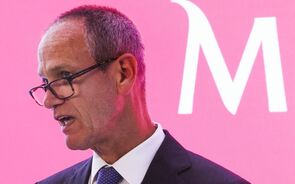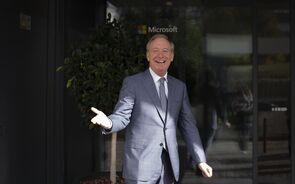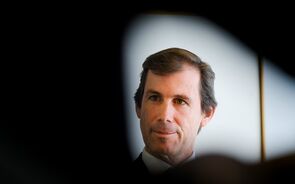The Fed's $2.2 trillion fire hose
1 Mensagem
|Página 1 de 1
The Fed's $2.2 trillion fire hose
Ben Bernanke and the Fed have lent and spent trillions, but as the recovery takes hold, they'll have to rein some of that back in.
NEW YORK (CNNMoney.com) -- The Federal Reserve threw a lot of money at the crisis to get the gears of the economy turning again, but it may soon be time to collect on the bill.
Federal Reserve Chairman Ben Bernanke will give an update on the Fed's expensive economic rescue package when he gives the keynote address at a monetary policy conference at the Fed building in Washington Thursday evening at 7:00 p.m. ET.
Bernanke and the central bank have been engaged in unprecedented actions over the past year. When the Fed dropped rates to zero in December 2008, it had to get creative to keep the recession from tailspinning into a depression, with the power of its rate-cutting tool taken away.
The Fed's solution was three-fold. It lent funds to companies and investors, bought up Treasury bonds, and purchased Wall Street's unwanted assets.
In all, the Fed more than doubled the size of its balance sheet, to $2.3 trillion at its peak in January from before the credit crisis began. Now, as the recovery begins to take hold, many of those programs are phasing out, but the balance sheet still stands at $2.2 trillion. Bernanke and the Fed are keeping a close eye on the recovery, so that they can wind down the balance sheet at the right time.
But the Fed will have to walk a tightrope: If the Fed keeps its balance sheet super-sized for too long, that could lead to out-of-control inflation. But deflation and soaring unemployment are a concern if the Fed begins its exit too soon.
"The Fed's facilities been extremely effective in doing what they were trying to do," said Dan Clifton, head of policy research at Strategas Research Partners. "But those programs were done on an as-needed basis, and we're starting to find out that we don't need them as much anymore."
The Fed has said repeatedly that it will wind down its balance sheet and raise rates at the appropriate time. But it hasn't yet budged.
"Bernanke is a student of history, and he knows that the real problems during the Depression occurred when the government pulled back its stimulus too quickly," said Doug Roberts, chief investment strategist at ChannelCapitalResearch.com. "Also, the Fed chief is up for reappointment, and he won't help his case if unemployment hits 12%, 13% or 14%."
Most economists think the wind-down will start in the beginning of 2010, but with $1 trillion in troubled assets, the eventual exit may be easier said than done. The Fed's ability to sell them off and reduce its balance sheet will depend heavily on how many investors want to buy unattractive assets like mortgage-backed securities and agency debt. If the Fed does sell them off soon, it will likely take a big loss.
Here's a look at what the Fed has lent and bought to rescue the economy:
Lending: The Fed has lent nearly $345 billion to businesses and investors in an effort to restore credit to consumers, banks and companies.
Innovative programs include the Commercial Paper Funding Facility, which gave businesses access to short-term loans to finance day-to-day operations. Similarly, the Term Auction Facility, a bank lending program, and a money market rescue program also helped restore liquidity to the market.
Those programs now account for about $220 billion of the Fed's balance sheet, down from $800 billion at their collective peak.
Currently, a big chunk of Fed lending is going to troubled insurer AIG (AIG, Fortune 500), which has received $40 billion from the Fed as of last week. TALF, the government's program to provide financing to private investors to buy up securities backed by consumer and small business loans, also accounts for a little more than $40 billion on the balance sheet.
Treasurys: As part of its effort to keep down bond yields -- and mortgage rates that track those yields -- the Fed has ramped up its purchases of government bonds since March, buying nearly $300 billion. The Fed now holds about $770 billion in Treasurys on its balance sheet, nearly double its pre-crisis total.
Prior to the recent ramp-up, the Fed's balance sheet was primarily composed of Treasurys, which the central bank held to control the flow of money in the economy. Now Treasurys make up just 35% of the Fed's balance sheet.
Asset purchases: The largest part of the Fed's balance sheet is in troubled assets.
The Fed has $970 billion of these assets, $700 billion of which are mortgage-backed securities it continues to purchase in bundles directly from government-sponsored mortgage finance giants Fannie Mae (FNM, Fortune 500) and Freddie Mac (FRE, Fortune 500). The Fed also holds $200 billion of Fannie and Freddie debt. The Fed purchased these assets in an attempt to keep mortgage rates lower, and it has largely succeeded.
The Fed said last month that it will continue to buy those assets for another six months, and its total purchases will add up to $1.5 trillion.
The rest of the Fed's troubled assets are asset-backed securities from AIG's counterparties and troubled assets it took off of Bear Stearns' balance sheet when Bear Stearns was sold to JPMorgan Chase (JPM, Fortune 500). Though many economists credit these purchases with rescuing the financial sector, the Fed has taken a substantial loss on them in the first half of 2009.
Fonte CNN Money http://money.cnn.com/2009/10/08/news/ec ... 2009100818
Cumprimentos,
Cap. Nemo
Cap. Nemo
1 Mensagem
|Página 1 de 1
Quem está ligado:
Utilizadores a ver este Fórum: Apramg, As_paus , Ferreiratrade, goncaladas, Google [Bot], Goya777, Kury Yozo, Lisboa_Casino, m-m, Mr.Warrior, MR32, nunorpsilva, O Magriço, OCTAMA, PAULOJOAO, Phil2014, Pmart 1, SerCyc, Simplório, trilhos2006 e 94 visitantes


